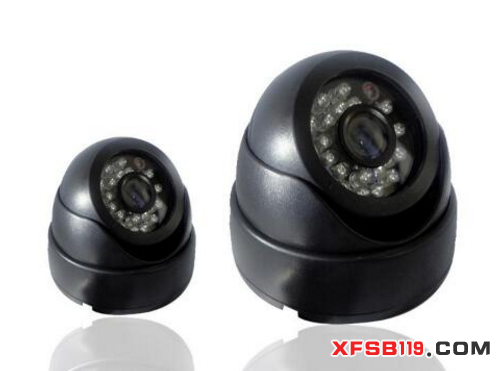In recent years, the continuous development of the vehicle monitoring market has made it an important market segment in the security industry. It has been in the domestic development for more than ten years. After two stages of market germination and market growth, in 2010 After that, the field of vehicle monitoring has entered a period of rapid development in China. 

The camera market is booming as acceptance in Advanced Driver Assistance Systems (ADAS), security surveillance (home and industry), and infotainment applications continues to rise. These applications have requirements for energy efficiency, cost efficiency, and product size, as well as a certain level of quality of service (QoS) and emissions.
Advanced driver assistance systems are one of the fastest growing applications in the automotive electronics market today. Driven by increased driving safety requirements and government regulations, camera sensors are key automotive electronics components. It is estimated that the sales volume of car camera modules in 2017 will reach 34 million sets, compared with 6.1 million sets in 2010. This is partly because the National Highway Traffic Safety Administration (NHTSA) has issued regulations requiring that at least one rear-view camera be sold in the US since 2014. Similar regulations will promote the adoption rate of cameras in automobiles. In order to differentiate, auto manufacturers will deploy multiple cameras in their high-end models.
In addition to rear-view camera parking assistance, automotive vision applications include night vision systems, interior rearview mirror replacement, and 360-degree multi-camera surround vision systems. Using the car vision system, the driver observes the video or image collected by the camera from all over the vehicle on the vehicle display device for safe driving.
In addition, there are some applications that rely on the driver's judgment. After capturing the sensor data, based on the machine vision system, the onboard processor automatically controls the car to perform a specific function, such as lane separation, signal recognition, and collision detection.
As the car becomes more intelligent, the intelligent requirements for the camera are higher, and the camera module must be able to detect, identify, analyze, and react. The introduction of more video data also puts higher demands on the bandwidth and cost of the car bus. Industry players compete to develop patented technologies for open network standards to provide higher bandwidth and lower total cost of ownership for users.
Ethernet is the natural choice for this type of network physical layer. In ISO 17215, the Camera Video Communication Interface (VCIC) specification uses Ethernet as the connection bus for the in-vehicle camera/sensor. Figure 2 is a 360-degree view of a camera based on an Ethernet connection. It is necessary to make judgments based on video information and leave enough reaction time for the driver, and the image accuracy and quality must be continuously improved, so image processing becomes an important part of the vehicle system. The dramatic increase in image processing tasks has also brought great challenges to camera module manufacturers. Their products must balance performance and power consumption to meet the harsh environment of the car without taking up too much space.
Building management is also intelligent. The remote management and monitoring system has evolved, and the picture quality has evolved from standard to high definition. The function is more intelligent, and features such as face recognition have been added. The proportion of camera networking continues to increase, and the proportion of connected cameras in 2016 is expected to be more than 60%.
Real-time face recognition improves the security level of security monitoring compared to traditional motion capture and recording. Using face recognition technology, the security system can lock the target object without triggering any alarms, and can also reduce false alarms, thus making the order more natural. Through artificial intelligence, you can also predict who will pose a threat to public safety.
Personal identification and stats can also be used for smart building management, such as lighting, air conditioning and access control based on the number of people. Public advertising and digital signatures are also the application directions for personal identification and population statistics.
The IPcamera has become a core component of Ethernet-based security surveillance systems, with a compound annual growth rate of 25% to 30% in recent years. Compared to traditional CCTV cameras, webcam has many advantages. The webcam does not require a dedicated video transmission network, and the terminal can be powered by a network port (PoE), so the cost is lower. Many applications and services are now available through a standard network such as Ethernet, which effectively reduces system costs.
Check Valve Series,Swing Check Valve,Wafer Check Valve,Lifting Check Valve
Wenzhou KAIZHENG Valve Technology Co.,LTD. , https://www.kazevvalve.com
